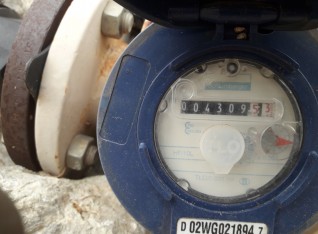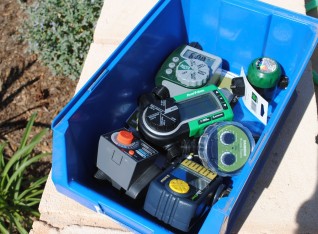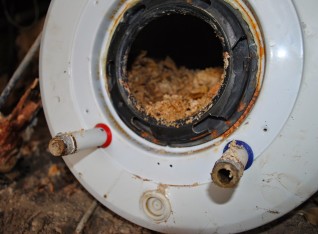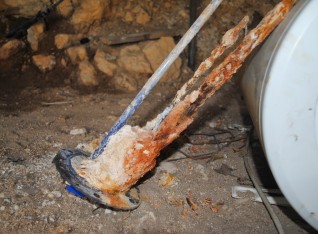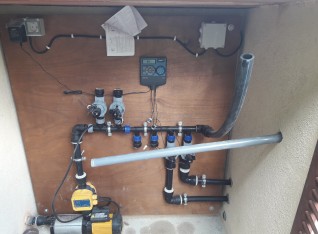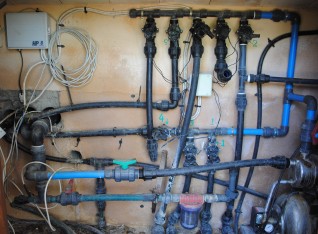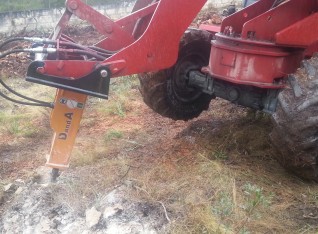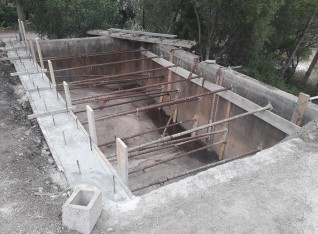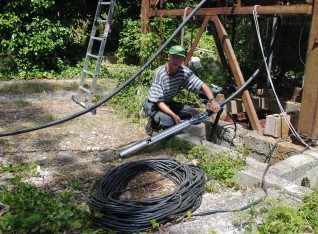Water
April 13, 2018If there would have been no water source on La Mina San Cayetano, we would probably not have bought it. Water is essential for many plants and trees. Being dependent on rain water only means that you can only grow very drought resistant species like Oleander, Agave, Carob trees, Olive trees, Almond trees, Cactus and Palm trees. But even for these you need additional water if the root system has not been developed.
Some facts:
- The main mine shaft below the tower goes down 150 meter
- The water level below the tower is 60 meter (barely changes during the year)
- The mine contains 4 kilometers of mine shafts of 2x2 meter
- Pumps are placed 30 meter below the water level at 90 meter
Hard water
The water here on Mallorca is extremely hard, it contains lots of limestone. It's causes lots of problems with boilers for instance. In the first years we bought a new boiler regularly and we always bought the cheaper ones in which the water is in direct contact with the hot metal coil. Economically this is not smart as you have to buy a new one every year. The type of boiler you should buy here on Mallorca is a ceramic one where the water does not come in contact with the water directly. These are twice or more times expensive, but in the end it's worth it, you will save money.
Another problem for us is that the limestone clogs all irrigation systems, whether you are using sprinklers or dripping system, you will have problems. In the first years after 2012 we used mainly dripping tube, which is 16 mm tube with small holes every 30, 40 or 50 cm. These are not just punched in holes, but very cleverly designed parts which always give the same amount of water, whatever the pressure is. The tube is also rated by the number of liter it drips per hour. Normal is that it drips 2 liter per hour. It works like this: the little part on the inside of the hole in the tube is where the water comes in. But it doesn't go straight to the the outside, it first goes round in this tiny part. If the pressure of the water is higher, the stream of water obstructs itself, preventing more water to go out.
It works very well ... for a year or so, then all the holes get clogged with limestone. The way I laid the tube was very labor intensive. I made one or two lopes around a tree or plant, connected this with a T-junction, connected this a short piece to the main tube by again using a T-junction. The only way to remove the limestone would be to disconnect everything and soak it in something acid like vinegar, which max contains about 6% acid. You can also use hydrochloric acid (HCl), which to my surprise can be bought here is every supermarket under the name Agua Fuerte (Strong Water) in a concentration of 25%. But you have to be very careful with this as when the HCl comes in contact with limestone it produces heat which can make plastic brittle. We once found out when we put the whole flushing mechanism of a toilet in Agua Fuerte, some small parts broke of a few days after it was cleaned of limestone. Vinegar works better as it works on the limestone much slower. Anyway, with everything connected and laid around the trees and plants it's silliness to disconnect everything, clean it and then connect it again.
Last year I came up with the idea to use sprinklers, high up in pine trees to cover as much surface as possible. For weeks I was buy laying the main tube infrastructure with 32 mm tube and from there with 25 mm to the sprinklers. I created 6 groups and connected them to timer, so a no stress system I thought. Though this was true most of the vegetation does not like to be watered from above with water containing limestone. For instance the pecan tree (yes, the one where the pecan nuts come from) hates it. The leaves of the pecan tree feel like velvet with small kind of hairs on the top side. Within a few weeks (watering on a daily basis), all leaves have a layer of grey deposit and the sun can not reach the chlorophyll in order do the assimilation reaction (Sunlight + CO2 + H2O => C6H12O6 + 6O2). The only tree in fact which does not care is the Royal Empress tree (Paulownia Tomentosa) which surprises me because the large leaves of this tree feel also like velvet.
But disappointment of course and for this year I am going back to the dripping systems and low sprinklers, which sprinkle the water below the leaves. And the dripping tube will just be rolled out from the 100 meter rolls without any cutting or T-junctions. Doing it this way makes it easier to roll it in once a year and soak it in vinegar - although it's still a lot of work.
Why we are not getting the limestone out of the water before we use it? Because we are consuming so much water that would need an industrial installation for this costing a lot of money, maintenance etc. I have consulted various firms about this who are installing this for domestic homes, but the amount of water we are using in Summer is too much for these systems.
Lake
We are creating a lake on LMSC, many of you may know this. It's still 'under construction' and it will be like this for a few more years I guess. My current plan is to collect as much rain water as possible from the roofs of all constructions here and lead it to this lake. If the lake can contain 2000 or more cubic meters of water we would have enough to get through the Summer with this water which has zero limestone in it. The more I think about this idea the better it gets. So for me the lake-project rises on the agenda.
Infusion
I am still wondering why there is no system where you are dripping some drops of acid in the water, just before it goes to the dripping hoses or sprinklers. Like an infusion where you can set the quantity of acid drops per minute/hour. I have once seen such a system for swimming pool, but I can't find anything on the internet and I am wondering why I cannot find anything. Perhaps the chemical reaction between limestone and acid or HCl is producing something which is not good for the plants and trees?
Regular rain this Winter
Last year was very dry until a week of extremes with around 40% of the annual rainfall in 1 week. This year, it has rained very regularly during the Winter and it still continues now in Spring as well. Blessing for me, as the irrigation tasks can be postponed a bit.
Comments
